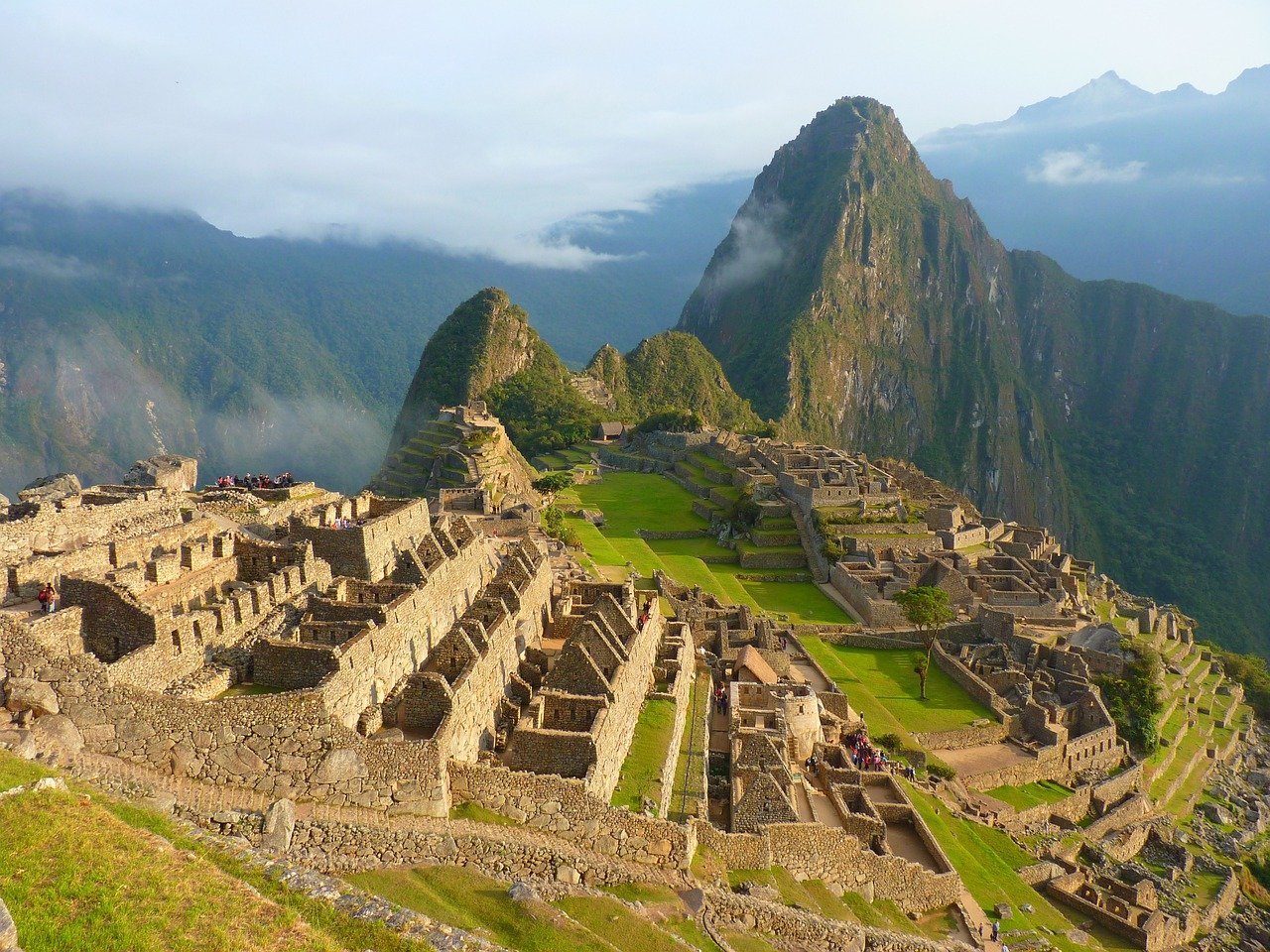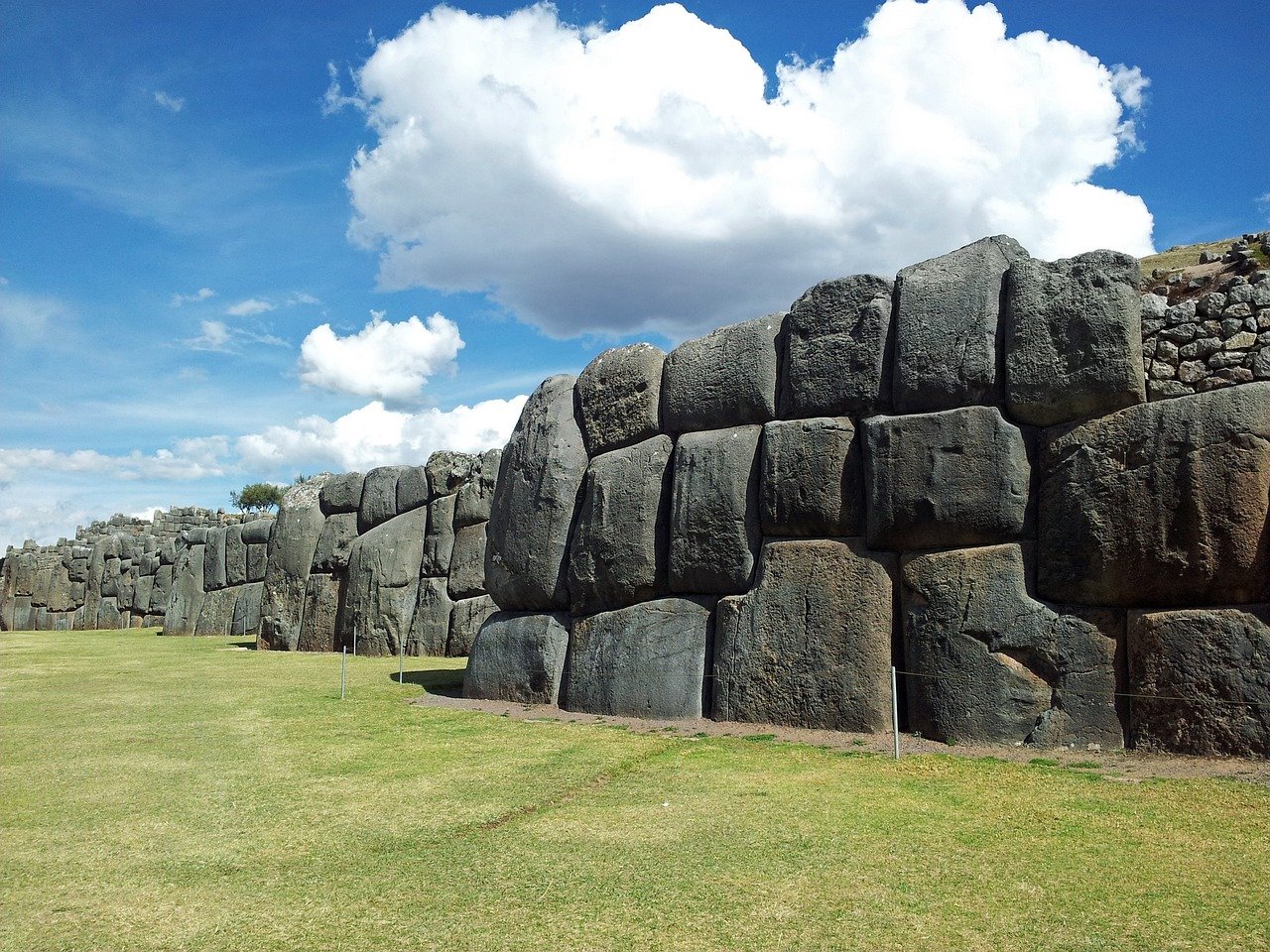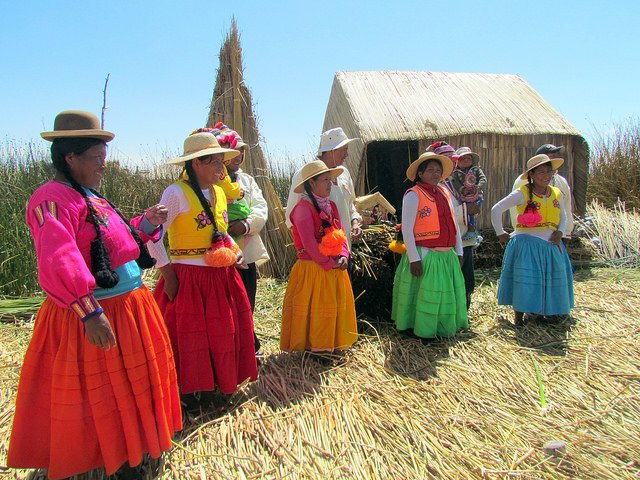Traversée des Andes : Trio Chili, Bolivie et le Pérou
15 jours & 14 nuits - A partir de 6695 EUR TTC*
Départ garanti à partir de 2 personnes - Pension complète - prix base 2 pers.
Highlights of the trip
Un circuit qui unit les merveilles naturelles du Chili, la magie de l’Altiplano bolivien et le patrimoine inca du Pérou.
Découvrir Santiago et Valparaíso, ville portuaire classée à l’UNESCO, entre funiculaires et fresques colorées.
Explorer les paysages lunaires de la Vallée de la Lune et partager un cocktail au coucher du soleil.
Admirer les flamants roses de la lagune Chaxa et les lagunes d’altitude Miscanti & Miñiques dans le désert d’Atacama.
S’émerveiller devant les geysers du Tatio et le village andin de Machuca.
Traverser l’Altiplano chilien et bolivien : désert de Dalí, Laguna Verde, Laguna Colorada et les Joyaux des Andes.
Fouler l’immensité du Salar d’Uyuni, visiter l’île Incahuasi et assister à un coucher de soleil inoubliable sur la mer de sel.
Survoler La Paz en téléphérique et flâner au marché des Sorcières.
Naviguer sur le lac Titicaca jusqu’à l’île de la Lune et l’île du Soleil, entre traditions et paysages sacrés.
Rejoindre Cusco par la route touristique de l’Altiplano avec ses sites majeurs (Raqchi, Andahuaylillas).
Vivre l’expérience unique du Machu Picchu, merveille du monde moderne.
Explorer la Vallée Sacrée : Ollantaytambo, salines de Maras, marché et site archéologique de Pisaq.
Découvrir Cusco, son centre historique et ses ruines, avec un atelier Pisco Sour et un dîner-spectacle traditionnel.
Terminer à Lima entre histoire coloniale et visite de la Casa Aliaga.
Itinerary
Jour 1 – Arrivée à Santiago & visite de la ville
Bienvenue au Chili !
Après récupération de vos bagages, votre guide vous accueille à l’aéroport et vous accompagne jusqu’à votre hôtel.
Option : possibilité de disposer immédiatement d'une chambre pour vous reposer après le vol (avec supplément)
Déjeuner dans un restaurant du marché central, lieu emblématique de la gastronomie locale.
L’après-midi, départ pour une visite guidée de la ville : découverte de la place de la Constitution, du palais présidentiel de La Moneda, puis de la place Bernardo O’Higgins sur l’Alameda. Passage devant les palais Errazuriz, Ariztía et Irarrazabal, témoignages de l’architecture historique de la capitale.
Poursuite vers la place d’Armes et sa cathédrale, le parc Balmaceda, le fleuve Mapocho, l’Estación Mapocho (œuvre de Gustave Eiffel, aujourd’hui centre culturel), et le parc Forestal au charme européen.
Dinner at the hotel.
Jour 2 – Santiago - Valparaíso (130 km – env. 3h30 aller-retour)
Après le petit-déjeuner, départ pour Valparaíso, ville portuaire classée UNESCO, célèbre pour ses collines, ses funiculaires pittoresques et ses fresques murales colorées. Découverte de ses quartiers historiques, montée en funiculaire, vue depuis le mirador 21 de Mayo. Déjeuner dans un restaurant local.
Return to Santiago late afternoon.
Dinner at the hotel.
-
We'll meet at the Lifeboat restaurant on the Prat quay to board the boat, which will take us on a half-hour cruise through Valparaíso. During the tour, we'll get to know the quay
On the way, we'll also observe the classic coastal fauna, such as sea lions, ducks, seagulls, small birds and many others.Next, we'll arrive at the Barón pier, from where we'll observe the metropolises, the hills of Barón and Polanco, and the historic campus of the Federico Santa María Technical University. On our way back to the Prat quay, we'll pass between warships and merchant ships, before returning to finish this beautiful cruise across Valparaíso Bay.
Jour 3 – Santiago ✈ Calama - San Pedro de Atacama (100 km – env. 1h20 de route)
Petit-déjeuner à l’hôtel. Vol vers Calama et transfert immédiat vers San Pedro de Atacama. Déjeuner dans un restaurant local.
Installation à l’hôtel, puis en fin d’après-midi, visite de la Vallée de la Lune, paysage lunaire unique recouvert de sel. Cocktail au coucher du soleil dans ce décor féerique.
Jour 4 – Salar d’Atacama & Lagunes Altiplaniques
Breakfast at the hotel.
Découverte du Salar d’Atacama, vaste désert de sel parsemé de lagunes. Visite du village de Toconao et de la lagune Chaxa, refuge de nombreuses espèces d’oiseaux. Poursuite vers les lagunes Miscanti et Miñiques, à 4300 m d’altitude, au cœur de la Réserve nationale Los Flamencos.
Déjeuner dans un restaurant local. Retour à l’hôtel en fin d’après-midi.
-
À la nuit tombée, partez pour une soirée d’observation astronomique dans l’un des ciels les plus clairs au monde. Accompagnés de guides spécialisés et de télescopes, découvrez les constellations de l’hémisphère sud, les planètes et la Voie lactée dans un décor magique et silencieux.
Jour 5 – Geysers du Tatio ✈ San Pedro de Atacama
Départ très matinal (vers 4h30) pour observer les Geysers du Tatio, site géothermique spectaculaire à 4300 m d’altitude. Petit-déjeuner pique-nique sur place.
Retour via le village de Machuca, lieu de bergers de lamas ancestraux.
Retour à San Pedro et déjeuner dans un restaurant local.
Free afternoon.
Diner à l’hôtel.
Jour 6 – San Pedro de Atacama - Hito Cajón - Lagunes Verte & Rouge- San Pedro de Quemez
Après le petit déjeuner, départ en direction du poste frontière de Hito Cajón, entre le Chili et la Bolivie. Après les formalités douanières, vous poursuivez en véhicule privé avec chauffeur hispanophone et guide francophone vers la Laguna Verde, située au pied du volcan Licancabur (5 916 m).
Vous traversez ensuite le surprenant désert de Dalí, aux formations rocheuses étranges rappelant les tableaux du célèbre peintre. Puis vous arrivez à la Laguna Colorada, vaste lac aux teintes rouges spectaculaires .Déjeuner en plein air en cours d’excursion.
L’après-midi, continuation vers les Joyaux des Andes, une série de lagunes d’altitude (4 000–4 200 m) aux couleurs variées, bordées de volcans majestueux : Ramaditas, Honda, Chiar Khota, Hedionda et Cañapa.
En fin de journée, arrivée à San Pedro de Quemez.
Dinner at the hotel.
Jour 7 – San Pedro de Quemez – Salar d’Uyuni – Île Incahuasi – Uyuni
Breakfast at the hotel.
Départ pour une randonnée autour du village, avec visite d’El Pueblo Quemado, un vestige de la Guerre du Pacifique, et observation des élevages de camélidés puis route vers le Salar d’Uyuni, la plus grande plaine de sel au monde. Découverte du processus d’extraction et de traitement du sel. Promenade sur cette étendue blanche spectaculaire et visite de la célèbre île Incahuasi, connue pour ses cactus géants.
Déjeuner pique-nique en plein air dans ce cadre exceptionnel.
En fin de journée, moment unique : coucher de soleil dans le Salar, accompagné d’un apéritif .
Dîner et nuit à l’hôtel.
Option : Nuit à l’hôtel de sel à Colchani (cf tableau de prix)
L’Hotel Luna Salada est un établissement unique situé à Colchani, aux abords du Salar de Uyuni, à environ 25 km de la ville d’Uyuni. Ce premier hôtel construit entièrement en blocs de sel offre une expérience immersive au cœur du désert de sel. Les chambres, les meubles et les sculptures sont façonnés à partir de sel extrait localement, créant une ambiance à la fois chaleureuse et insolite.
Web : www.lunasaladahotel.com.bo
Jour 8 – Uyuni ✈ La Paz : visite de la ville et de la Vallée de la Lune
Transfert matinal à l’aéroport d’Uyuni pour un vol vers La Paz.
Arrivée à l’aéroport d’El Alto et transfert en téléphérique vers le centre de La Paz, offrant une vue spectaculaire sur la ville en terrasses.
Visite du centre historique : Place Murillo, Palais du Gouvernement, Assemblée Législative, Cathédrale, Marché des Sorcières, Marché Artisanal. Visite des quartiers populaires authentiques.
Après le déjeuner, découverte de la Vallée de la Lune, un paysage géologique étrange et fascinant.
Dîner et nuit à l’hôtel.
Jour 9 : La Paz - Copacabana – Île de la Lune – Île du Soleil (190 km – environ 5h30 de route)
Après le petit-déjeuner, départ de La Paz en bus vers Copacabana puis traversée du détroit de Tiquina en petite embarcation. Vous déjeunez à Copacabana avant d’embarquer en bateau vers l’Île de la Lune pour découvrir le Temple des Vierges du Soleil. Ensuite, continuation vers l’Île du Soleil.
Déjeuner à Copabacana.
Dinner at the hotel.
À noter : pour visiter l’Isla del Sol, prenez crème solaire, chaussures confortables, chapeau et un petit sac avec l’essentiel pour la nuit. Vos bagages seront sécurisés à Copacabana.
Jour 10 : Île du Soleil – Visite du Sud de l’Île et Apthapi – Kasani – Puno
Après le petit-déjeuner à l’hôtel, visite des Jardins de l’Inca avec la Fontaine sacrée aux trois eaux, symbole de la devise inca : Ama Sua, Ama Llulla, Ama Khella (« Ne vole pas, ne mens pas, ne sois pas paresseux »). Vous découvrez ensuite Pillkokayna, ancienne résidence secondaire inca aux murs en pierres et mortier de boue, avec ses niches trapézoïdales et une porte principale orientée vers la montagne sacrée Illampu. Ce palais de deux étages date de la fin du XVe siècle, sous le règne de Tupac Yupanqui.
Le déjeuner est un repas traditionnel andin Apthapi.
Le retour à Copacabana s’effectue en bateau, suivi d’une visite de la Basilique. Puis départ pour Kasani où vous traversez la frontière entre la Bolivie et le Pérou et changez de véhicule. Vous prenez ensuite la route pour Puno.
Dinner at the hotel.
Jour 11 – Route vers Cusco (environ 10h de route avec arrêts et visites)
Départ en bus touristique partagé avec votre guide francophone. Le parcours traverse l’Altiplano et inclut des arrêts sur des sites majeurs comme Raqchi avec son célèbre temple dédié au dieu Wiracocha, ainsi que Andahuaylillas, surnommée la “chapelle Sixtine de l’Amérique Latine”.
Déjeuner en cours de route. Arrivée à Cusco en fin de journée.
Dinner at the hotel.
Jour 12 – Machu Picchu
Journée dédiée à la découverte de l’une des 7 merveilles du monde moderne ! Vous prenez le train depuis la gare d’Ollantaytambo pour rejoindre Aguas Calientes, le village situé au pied de la célèbre citadelle Inca. Après un déjeuner au restaurant local, vous monterez en navette jusqu’à l’entrée du Machu Picchu. La visite guidée dure environ 2 heures, permettant de découvrir les temples, terrasses et constructions impressionnantes de ce site unique. En fin de journée, vous reprendrez la navette puis le train pour revenir dans la Vallée Sacrée.
Dinner at the hotel.
À noter : Les voyageurs laissent leurs valises à Cusco et ne prennent qu’un petit sac pour la nuit dans la vallée sacrée. Valises interdites dans le train.
Jour 13 – La Vallée Sacrée
Visite de la forteresse d’Ollantaytambo (altitude 2 792 m), un superbe exemple du travail de la pierre pré-inca et inca. Le site se compose de terrasses, greniers pour les récoltes, places dont la célèbre Mañay Raqay (Porte de l’Arc-en-ciel), la maison royale avec temples, villas et observatoire astronomique, ainsi que l’enceinte aux 10 niches et le Temple du Soleil en granit rose, inachevé.
Vous profiterez ensuite d’une visite panoramique des Salines de Maras.
Déjeuner au restaurant.
L’après-midi, visite du marché local puis du site archéologique de Pisaq (altitude 2 970 m), connu pour ses terrasses agricoles étroites en forme d’aile de perdrix, ses constructions militaires, religieuses et agricoles. Ce site protégeait probablement l’entrée sud de la vallée sacrée.
Dîner dans un restaurant local.
Jour 14 : Centre historique de Cusco et ruines environnantes
Le matin, visite des ruines autour de Cusco : Saqsayhuaman et Tambomachay.
Puis découverte du quartier artistique de San Blas, la fameuse pierre aux 12 angles, la Place d’Armes, le marché central de San Pedro et le temple du Soleil Qorikancha.
Retour à Cusco pour déjeuner.
En fin d’après-midi, atelier participatif pour apprendre à préparer le Pisco Sour, cocktail emblématique péruvien à base de pisco, citron vert, blanc d’œuf, sirop de sucre et angostura.
Le soir, dîner spectacle convivial et traditionnel.
Jour 15 : Cusco ✈ Lima - départ
Votre guide vous accompagne à l’aéroport de Cusco pour votre vol vers Lima.
Arrivée à Lima, déjeuner dans un restaurant local.
L’après-midi, visite du centre historique de Lima, avec un arrêt à la Casa Aliaga, demeure coloniale emblématique témoignant de l’histoire et du patrimoine de la ville.
Votre guide vous accompagne à l’aéroport pour prendre votre vol de retour.
INFORMATIONS - SALAR D’UYUNI
Climat
Le Salar d'Uyuni a un climat sec et très froid l’hiver (jusqu’à -25 °C) et pluvieux l’été (décembre à mars), période durant laquelle il peut se transformer en miroir d’eau. Prévoir des vêtements très chauds.
Altitude
Le Salar d'Uyuni se situe à plus de 3 600 m d’altitude, ce qui peut entraîner le mal des montagnes (soroche). Une bonne condition physique est recommandée, et il est conseillé de s'acclimater progressivement. Il est conseillé de consulter votre médecin avant le départ.
À noter : De décembre à mars, le Salar peut être inondé, rendant l’accès à l’île Incahuasi difficile. Le spectacle du ciel reflété dans l’eau reste toutefois saisissant. De juin à août, les températures chutent fortement : prévoyez des vêtements très chauds.
Hotels
Santiago
• Plaza El Bosque Ebro 4★ – plazaelbosque.clSan Pedro de Atacama : Hotel Don Raúl 3★ – donraul.cl
San Pedro de Quemez : Hotel Tayka de Piedra 3★ – taykahoteles.com/es/
Uyuni :
• Jardines de Uyuni 3★ – jardinesdeuyuni.com
• Hotel de Sal Luna Salada (option) – lunasaladahotel.com.boLa Paz : Ritz Apart Hotel 3★ – ritzbolivia.com
Île du Soleil (Copacabana) : Jacha Inti Lodge
Puno :
• Casona Plaza Hotel 3★ – casonaplazahoteles.com
• Casa Andina Standard Puno 3★ – casa-andina.comCusco :
• Taypikala Hotel Cusco – taypikala.com
• Royal Inka Hotel – royalinkahotel.comVallée Sacrée (Urubamba) :
• San Agustin Urubamba – hotelessanagustin.com.pe
• Mabey Urubamba – hotelesmabey.comHotel categories are based on national standards. Hotels are subject to availability at the time of booking. In the event of non-availability, they will be replaced by hotels of equivalent category.
Upgrade to a higher category possible: please contact us
-
Hébergement : 14 nuits en hôtels mentionnés (ou similaires), chambres double/twin, petit-déjeuner inclus.
Pension complète
Transferts terrestres en service privé, adaptés à la taille du groupe, sauf trajet Aguas Calientes/Machu Picchu (J13) en navette collective.
Région Lipez/Salar : transport en 4x4 tout-terrain, maximum 4 passagers par véhicule.
Excursion lac Titicaca (J9-J10) : bateau motorisé privé avec guide francophone, partagé par tous les participants.
Visites et excursions avec guide local francophone.
Entrées aux musées et sites touristiques inclus (hors jours de fermeture).
Ordre des excursions susceptible de changement, confirmé sur place.
Assistance 24h/24 par notre équipe locale pendant tout le circuit.
-
Vols internationaux.
Vols intérieurs :
Vol intérieur Santiago / Calama
Vol intérieur Uyuni / La Paz
Vol intérieur Cuzco / Lima
Activités, visites et excursions optionnelles ou non mentionnées.
Repas non inclus dans le programme.
Boissons.
Pourboires, dépenses personnelles.
Supplément chambre individuelle.
Assurances (annulation, assistance, rapatriement).
Tout ce qui n’est pas mentionné dans "Inclus"
-
Arrivées à Santiago
Dimanche 15 mars 2026
Dimanche 19 avril 2026
Dimanche 17 mai 2026
Dimanche 31 mai 2026
Dimanche 05 juillet 2026
Dimanche 16 août 2026
Dimanche 13 septembre 2026
Dimanche 04 octobre 2026
Dimanche 18 octobre 2026
Dimanche 08 novembre 2026
NOTES IMPORTANTES
Excursions – Groupes jusqu’à 4 personnes
Atacama : transport partagé avec d’autres voyageurs, mais avec guide francophone
* NOTES IMPORTANTES : LO NUESTRO - Excursions pour les groupes jusqu’à 4 personnes :
Atacama : le transport sera regroupé avec d'autres voyageurs multilingues mais avec un guide francophone privé pour le groupe.
Île de Pâques : le groupe sera mélangé à d'autres voyageurs francophones afin de visiter l’ensemble l'île.
Les transferts terrestres en service privé adapté à la taille du groupe durant tout le circuit. Excepté le trajet Punta Arenas / Puerto Natales en bus de ligne régulière jusqu’à 4 personnes (sans guide).











